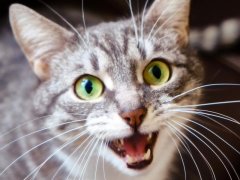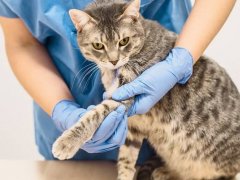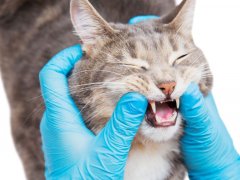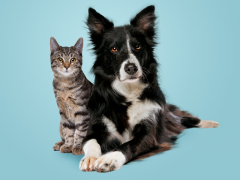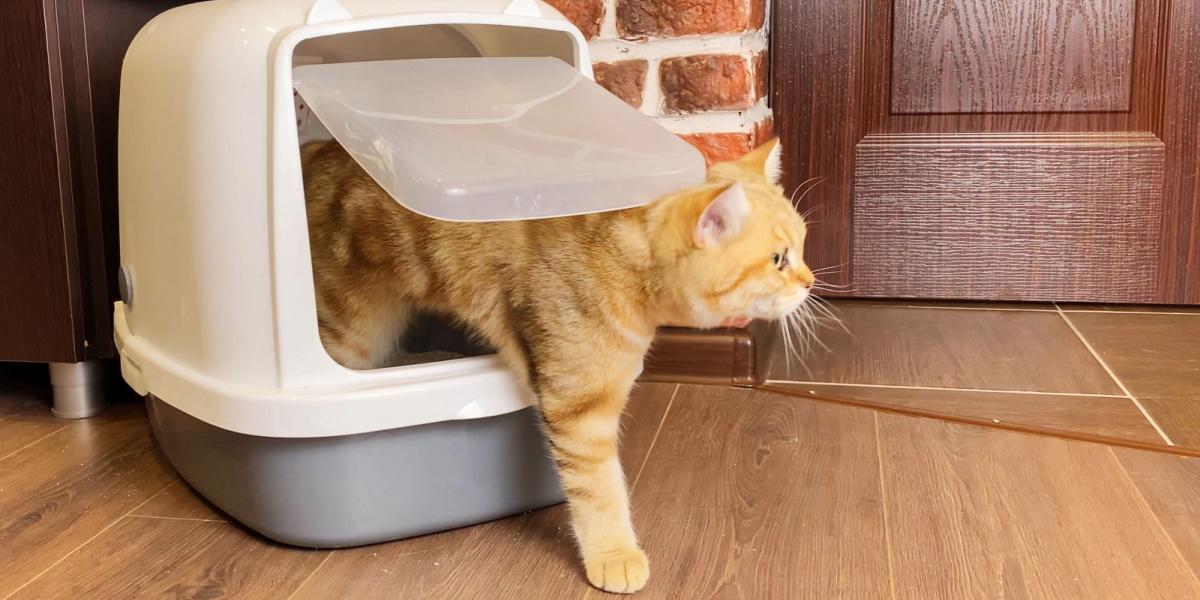
To cat parents, it’s a familiar sound: the rustling of kitty litter, the scraping of claws on dirt, followed by the scraping of claws on plastic, and the spray of cat litter scattering on the hard floor. Litter boxes are a natural part of cat ownership, albeit not the most glamorous part! However, what if you’re hearing this sound far too much? What if your cat is in the litter box frequently?
What if your cat keeps going in and out of their litter box every hour, every half hour, or more? You would probably be concerned, and rightly so. Read on to find out what may be causing this and how to address it.
There are a number of reasons that a cat may either be urinating more frequently or trying to urinate and are unable to. Urinary tract infections, environmental stressors, bladder stones, and blocked urethras are among some of the reasons a cat may be using the litter box more frequently. Treatment and preventative care are available for most urinary and bladder issues that may cause your cat to use the litter box more frequently.Key Takeaways
Increased Frequency Of Urination
There are several possible causes for a cat using the litter box frequently:
1. Stress Cystitis Or Feline Idiopathic Cystitis (FIC)
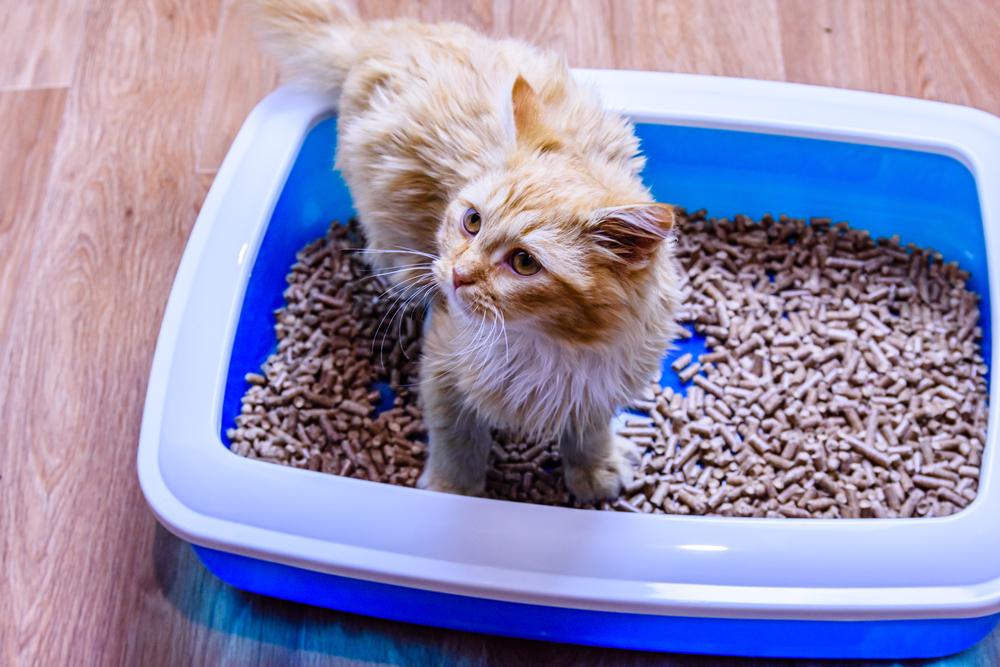
Your cat’s bladder health is very important. If they are using the litter box frequently, then it may be time to visit the vet.
We all know that cats are emotionally complex creatures. In some, an increased stress response to certain situations can manifest as cystitis, or inflammation of the bladder. In cats under 10 years of age, this is usually ‘sterile’ cystitis which means it is not caused by a bacterial infection.
The inflammation makes the bladder very uncomfortable for the cat and it creates the urge to pass small amounts of urine, often. This means you may notice your cat using the litter box more frequently. Sometimes, the urine may look dark or bloody and your kitty might strain hard to pass it.
Also Read: Urinary Tract Infection In Cats
2. Urinary Tract Infections, Or UTIs
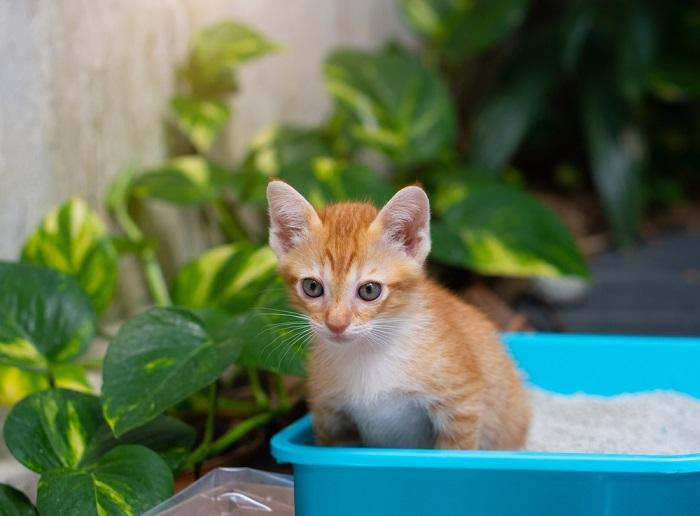
Frequent use of the litter box may mean that your cat is battling a UTI.
Some cats, particularly those over 10 years of age, can develop bladder infections otherwise known as ‘bacterial cystitis’. These can look very similar to cats with FIC, with frequent, small amounts of discolored urine being passed.
Also Read: Bacterial Infections In Cats: Causes, Symptoms, & Treatment
3. Bladder Stones

Bladder stones are painful, and you may hear your cat vocalizing when they attempt to pass urine.
As with people, cats can develop uroliths or bladder stones. These are usually the result of a poor diet, but can also be influenced by other factors such as dehydration and genetic predisposition. Typically, the pH of the urine is out of balance which causes minerals in the urine to deposit as crystals.
These crystals can clump together along with inflamed mucus from the bladder wall and form hard, rock-like stones. Understandably, these can be incredibly uncomfortable, and cause an affected cat to use the litter box more frequently.
Also Read: Bladder Stones In Cats: Causes, Symptoms & Treatment
4. Bladder Tumors

Not every trip to the litter box means your cat is unwell, but it’s important to keep your eye on the situation.
Although it is always scary to think your feline family member might have a tumor, it is important to remember that this is just one of many possible causes of urinary problems.
Tumors can cause changes to the bladder lining, causing inflammation and therefore straining. In extreme cases, they can reduce the space available in the bladder, making it more likely for your cat to want to use their litter box more frequently.
All of the above causes present in similar ways and are grouped together as something known as Feline Lower Urinary Tract Disease, or FLUTD. This is an umbrella term for the medical problems affecting the bladder and urethra in cats.
Also Read: The 7 Best Supplements For Cat Urinary Health
5. Polyuria And Polydipsia, Or PUPD

Sometimes frequent drinking and urination is a sign of a deeper medical issue.
PUPD is the term given to a patient who is drinking and urinating a lot. Although some of these cats may also have a bladder infection such as E. coli cystitis, PUPD is not necessarily a sign of a urinary problem – it can be a sign of other medical issues.
For example, kidney failure or thyroid disease can cause a cat to drink and pee excessively. These cats differ from those with FLUTD in that they pass large volumes of dilute-looking, unscented urine, and without straining to do so.
Also Read: Kidney Failure In Cats: Symptoms, Diagnosis, & Treatment
6. Unable To Pass Urine

Male cats are more susceptible to urethra blockage, a painful condition that makes it difficult to pass urine.
This is the worst-case scenario for all bladder-related issues: a cat that is trying but unable to pass urine. These are cats that have FLUTD but are also often referred to as “blocked cats” because they have a blockage in their urethra, the tube through which urine passes out of the bladder. Often, this is caused by a urolith or collection of crystals that obstructs the passage of urine. Due to the differences in anatomy, blocked cats are almost always males.
Once this urinary blockage occurs, the bladder gradually fills up to the point of excess which is an incredibly painful, not to mention life-threatening, medical emergency. The back-flow effect can cause kidney failure and electrolyte disturbances if the condition is not noticed and treated swiftly.
Cats with urethral blockages are often very distressed and strain forcefully in their litter trays. Sometimes they will vocalize and meow loudly at their unsuccessful attempts to empty their bladder.
There are several known risk factors for this distressing condition:
- Overweight or obese cats
- Cats from multi-cat households
- Cats fed low-quality cat food
- Cats that lead a sedentary lifestyle
- Indoor only cats
Regardless of the time of day or night, if there is any chance you think your cat may have a urethral blockage, it is vital to seek immediate veterinary attention.
Also Read: Why Do Cats Dig In Their Litter Box?
Treatment And Prevention Of Bladder Issues In Cats

A urinalysis at the vet can help diagnose some issues with a cat’s bladder and urinary tract.
Although bladder issues can be challenging, treatments are available and fortunately, there is much we can do to prevent urinary problems from occurring in the first place. The first step is a thorough examination by a veterinarian, to ascertain that it is in fact a bladder issue and not constipation or PUPD.
If bladder issues are the cause, a urine sample will be taken for testing to determine what form of urinary tract disease is present. As well as this urinalysis, it is likely that a blood sample is taken and that an ultrasound of the bladder is performed as well to check for underlying causes.
1. Pharmaceutical Treatments
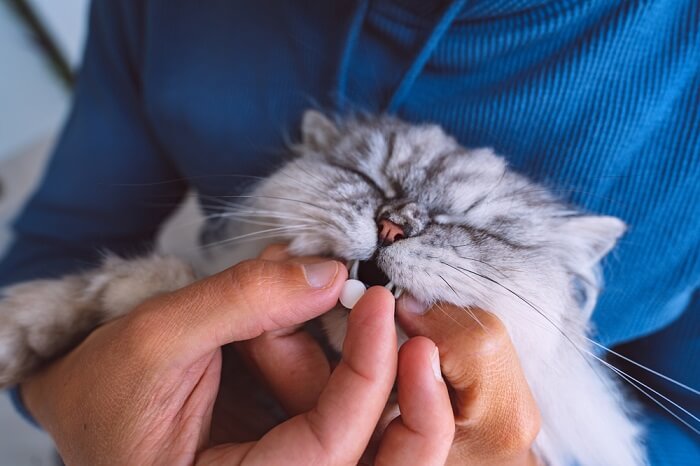
Antibiotics are often prescribed to help a cat battling a UTI.
Most commonly, anti-inflammatory drugs are given to cats with urinary issues, in order to reduce bladder lining inflammation. Care must be taken when using these drugs in sick or dehydrated patients so never medicate your cat without speaking to a veterinarian first.
Other painkillers such as opioids may also be used, along with muscle relaxants to help void the bladder. If bacteria or infection-fighting white blood cells can be seen in your cat’s urine sample, then antibiotics will be prescribed to fight off the bladder infection.
Also Read: What Can You Give A Cat For Pain? 6 Vet-Recommended Options
2. Dietary Modifications
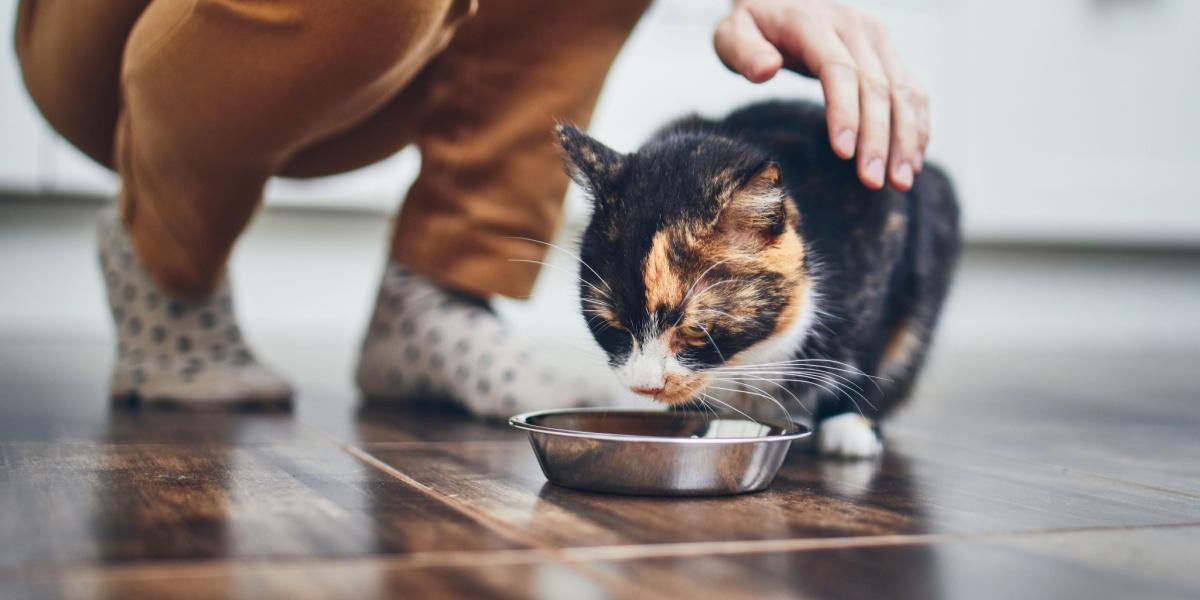
Sometimes a dietary change is necessary to keep your cat’s urinary tract and bladder functional and healthy.
Dietary modification is one of the best ways to both treat and prevent urinary tract disease in cats. Prescription cat foods can correct urinary pH imbalances, promote good bladder lining health, and even dissolve some crystals and uroliths.
Many of these diets are safe to use long-term and are often advised for cats that have had bouts of FLUTD. In addition to the right type of food, feeding the correct amount to maintain a healthy body weight will also help ward off urinary issues.
Also Read: The Best Homemade Cat Food Recipes For Kidney Disease
3. Environmental Changes
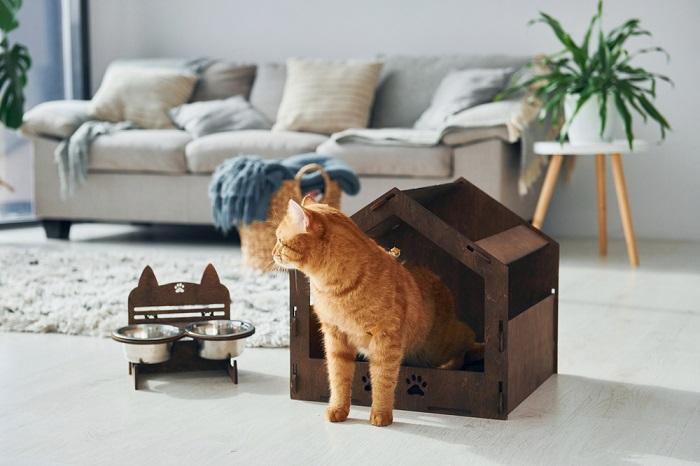
Cats are sensitive animals and may react to environmental changes and stresses by going to the bathroom more frequently.
As mentioned, environmental stressors are one of the known causes of FLUTD. These may include:
- Stray or intrusive neighborhood cats
- Excessive competition for resources within a household
- Changes to human companions within a household
- Building work or disruption to the core territory
- Moving house
While it would be impossible for us to remove all potential stressors from our cats’ lives, we can endeavor to keep their routines stable and provide ample access to resources. This is particularly important for cats of a nervous or stressed disposition. Some of the things we, as cat owners, can do include:
- Provide ample litter boxes within the household (ideally one for each cat, plus a spare).
- Reduce competition for resources (such as food, bedding, and attention) within a household.
- Provide pheromone diffusers and sprays to reduce tension and destress feline family members.
- Play with your cat to reduce stress, improve their mental health and keep them active.
4. Treatment For Urethral Obstructions
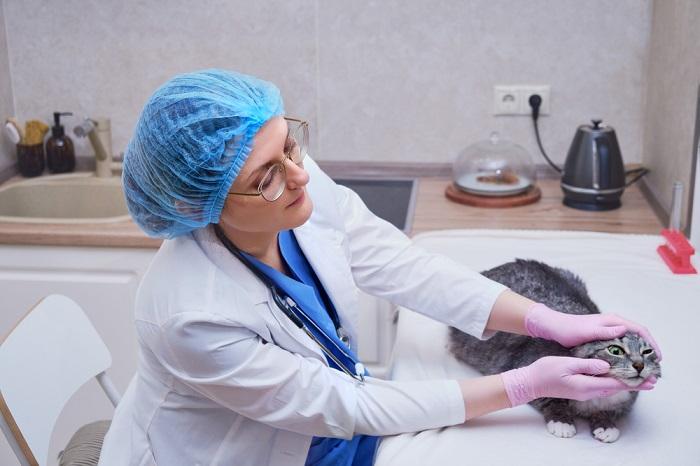
Treating your cat at the vet for bladder issues is not only a good idea, but it is absolutely necessary.
Due to the life-threatening nature of blocked bladders, the treatment for them is intensive and often costly. In addition to the standard blood and urine tests and ultrasonography, an anesthetic and procedure are required to “unblock” the bladder.
This procedure involves placing an indwelling urinary catheter into the penis, along the urethra, and into the bladder, allowing the trapped urine to flow out. Sometimes this procedure can be tricky and require multiple rounds of flushing the urethra to dislodge sediment and uroliths.
Once the urinary catheter is in place, the urine is emptied and the bladder is flushed copiously to remove as much debris and crystals as possible. This catheter typically remains in place for 12-48 hours depending on the individual case. During this time, treatment is started for the cause of FLUTD, and fluids are given via an intravenous drip.
The aim of treatment is to support kidney function, flush out toxins from the system and reduce bladder disease. If treatment is successful, once the urinary catheter is removed, the cat is able to urinate normally on their own and continue treatment in their own home.
For the unlucky minority of cases, the patient may still be unable to urinate when the catheter is removed or the catheter itself may become blocked. In these cases, the “unblocking” process may need to take place again. While many cases are treated successfully, cats that have had one urinary obstruction are unfortunately more prone to having issues in the future. As with so many cat health problems, prevention is better than cure in these difficult cases.
Frequent Litter Box Use: Final Thoughts

Never hesitate to take your cat to the vet if they are having trouble passing urine after frequent trips to the litter box.
The two most common reasons for a cat to use the litter box frequently are when your cat is passing urine abnormally frequently, and when your cat is repeatedly trying to pass urine but is unable to do so.
It could be that your cat is in their litter box in order to poop and that they either have diarrhea or constipation. Most commonly, however, a urinary problem is the culprit. While being unable to pass urine is the most serious among these options and is an absolute medical emergency, all causes of frequent trips to the litter box require prompt veterinary attention.
Also Read: Do Cats Know When You’re Sick?
Frequently Asked Questions
Why is my cat spending so much time in the litter box?
Your cat may be having difficulty passing urine or feces. Some common causes of this include constipation and cystitis. In severe cases, these can lead to potentially fatal conditions so it is important to take your cat to a vet straight away.
Why is my cat peeing every 5 minutes?
It is likely that your cat has cystitis. There are many causes of cystitis in cats, including urinary tract infections, bladder stones, and environmental stress. Left untreated, cystitis can cause some very serious health issues, so be sure to seek veterinary advice immediately.
How can you tell if a cat has a UTI?
Cats with UTIs often want to use their litter box frequently. They may strain or meow whilst in their litter box and their urine may be dark, bloody, or smelly.
